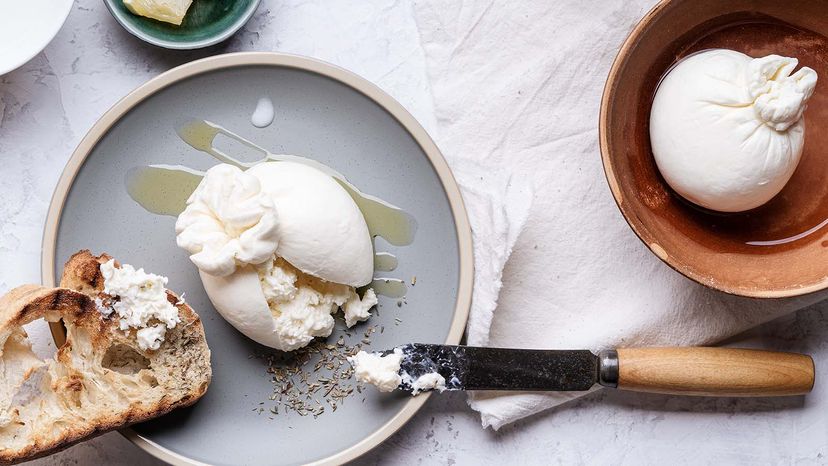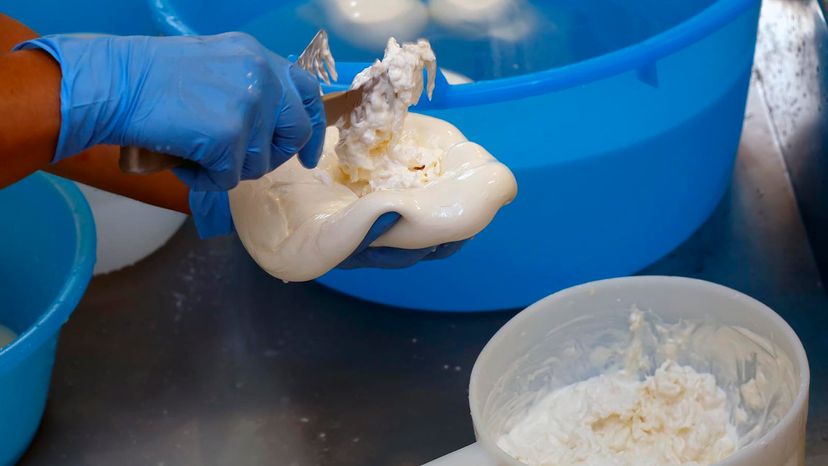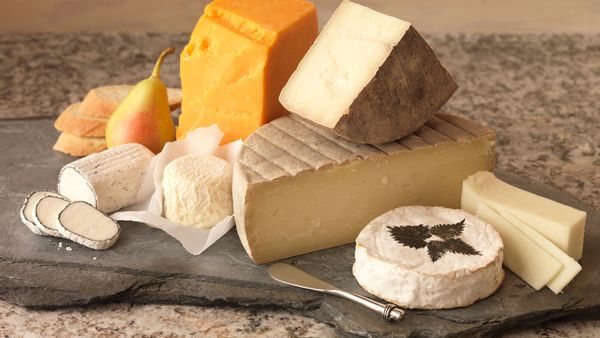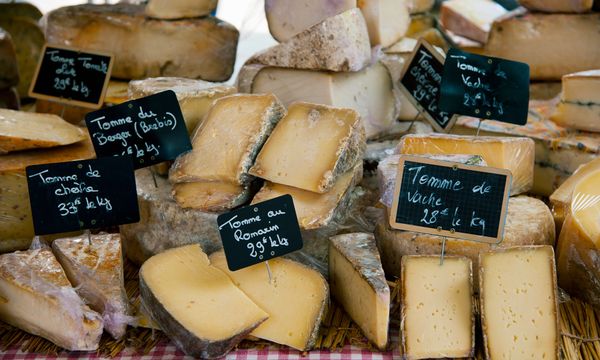
It's hard to go wrong with burrata or mozzarella cheese, but while they may look it, these Italian cheeses are not one and the same. On the outside, burrata and mozzarella look like simple and soft cow's milk cheeses. Inside burrata, though, a treasure trove of rich, milky stracciatella cheese awaits.
This key, cream-filled difference stems from the cheese-making process, according to cookbook author and founder of That Cheese Plate, Marissa Mullen. "The process to make mozzarella and burrata are slightly different," Mullen says via email. "Mozzarella is made by heating and pulling cheese curds in a process called 'pasta filata.' The cheese goes through a stretching process using hot water or whey and molded into small rounds."
Advertisement
Burrata, on the other hand, is like a cheese within a cheese, with stracciatella (a creamy, milky cheese) on the inside and mozzarella on the outside. "Burrata is made by using mozzarella cheese, stretched to include a small pouch that holds fresh cream and cheese curd," Mullen says. "Because of this, burrata is much richer and creamier than a traditional mozzarella."



